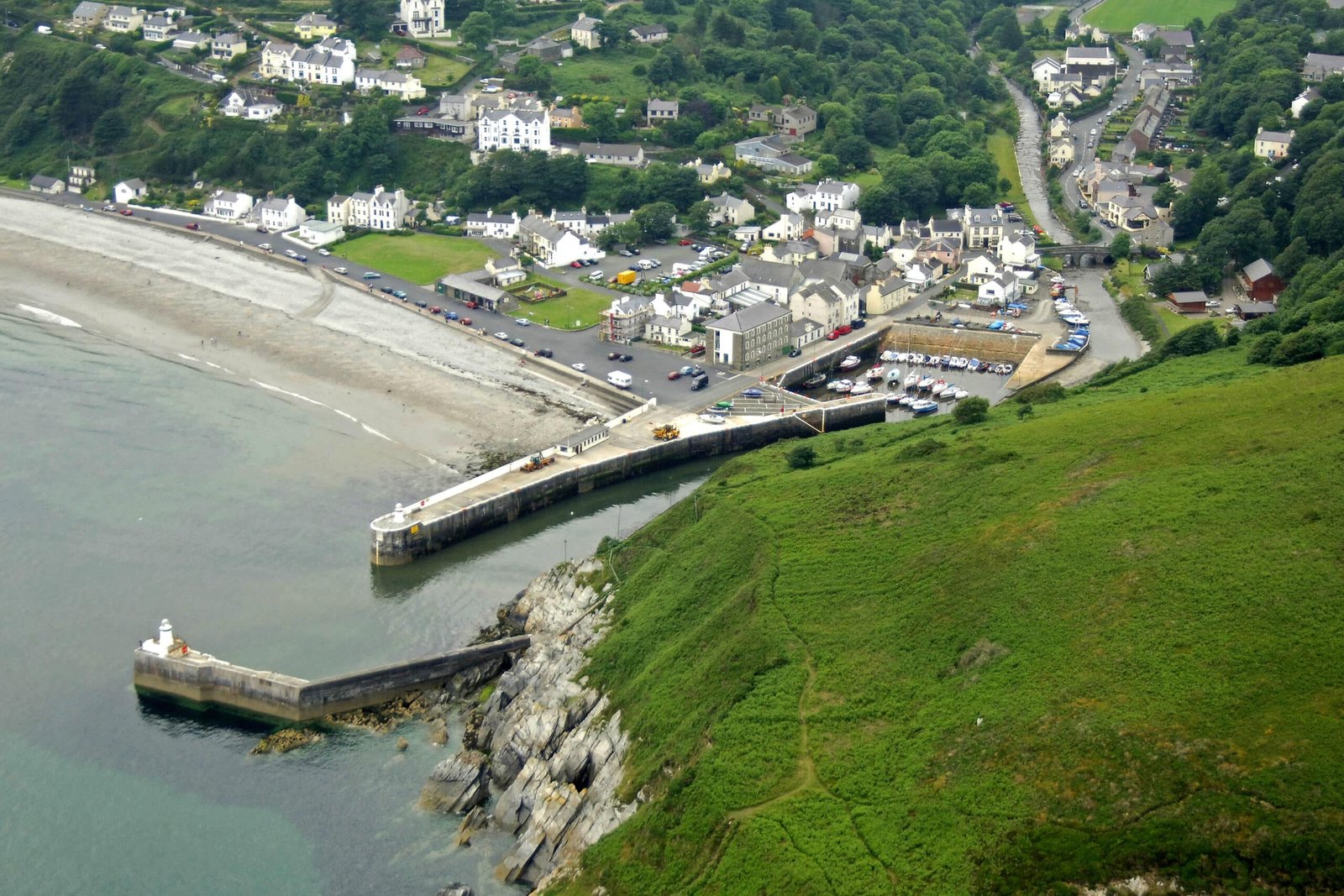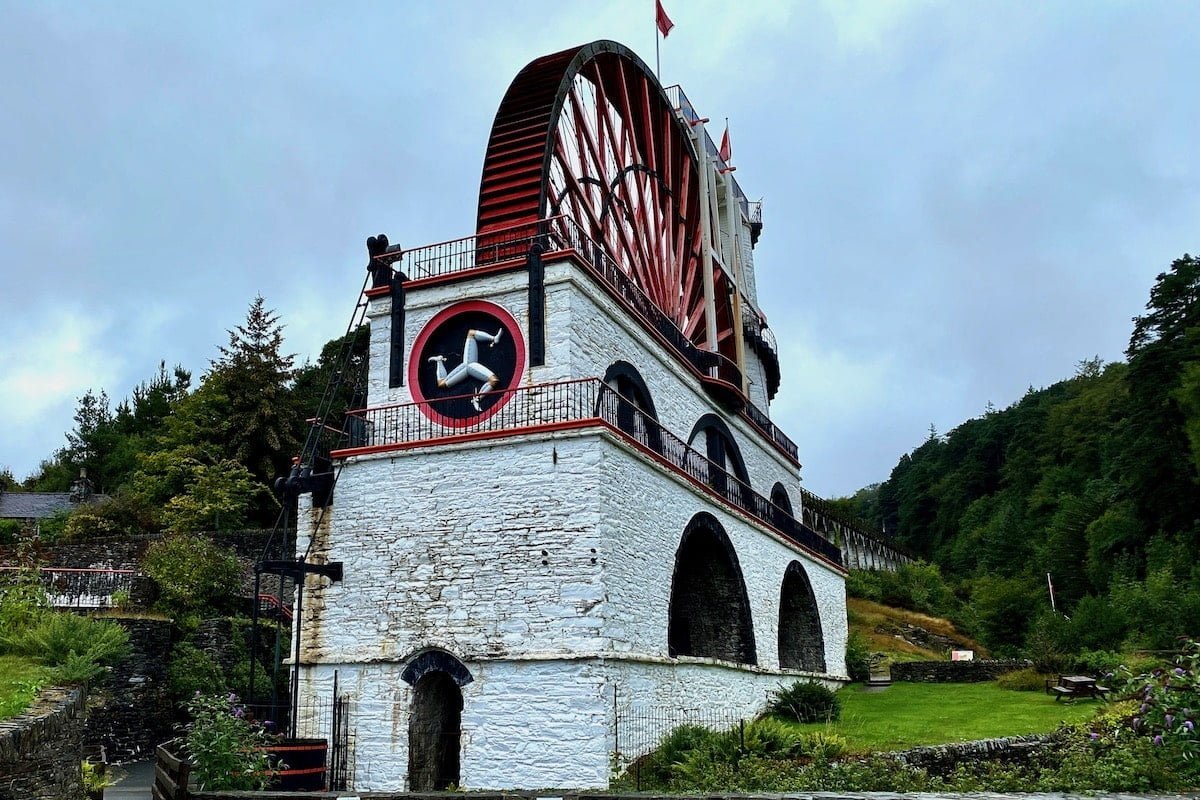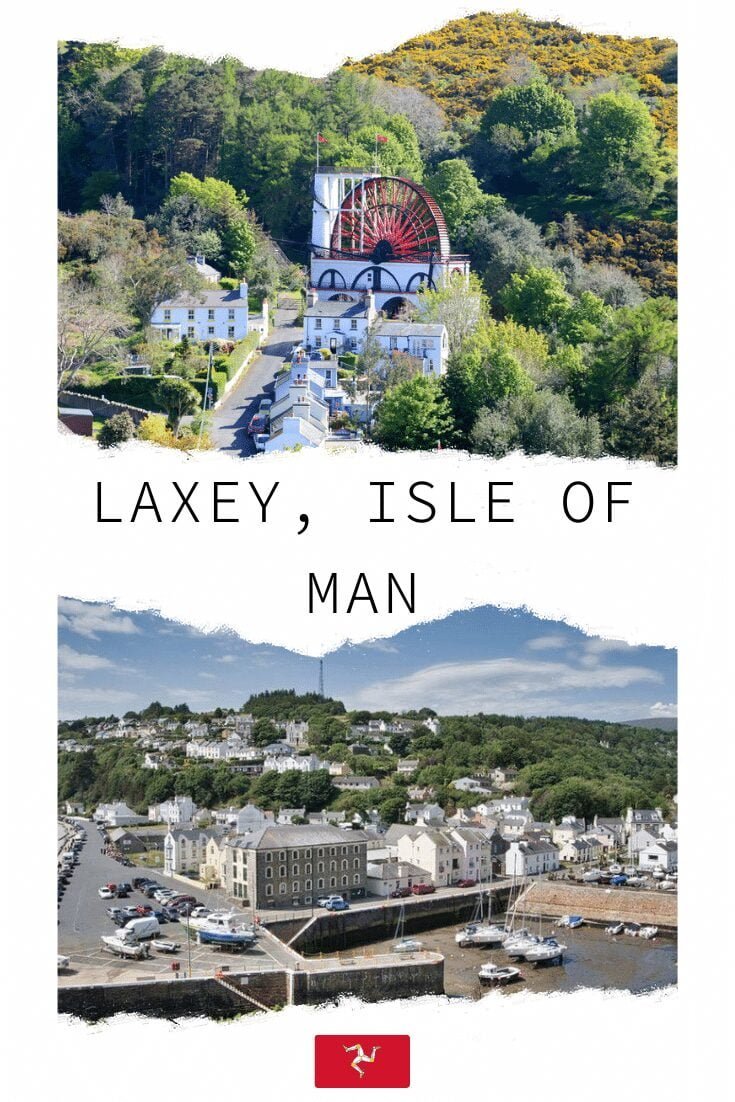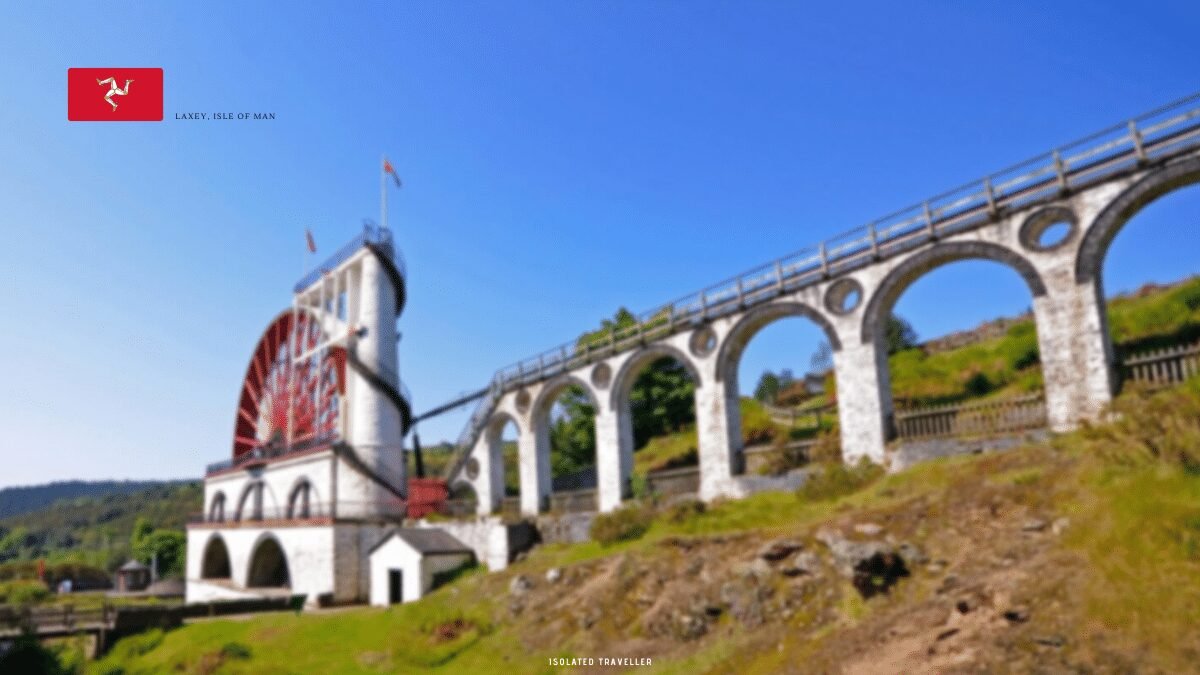Laxey, Isle of Man
On the Isle of Man’s eastern coast, in the Irish Sea between Great Britain and Ireland, is the village of Laxey, a self-governing British Crown dependency. The village is about 16 kilometres north of Douglas, the island’s capital.
Perhaps the most famous landmark in Laxey is the Lady Isabella, a historic waterwheel that can be found at the Laxey Wheel and Mines Trail. The waterwheel, which was constructed in 1854 and has a diameter of 72 feet, is the biggest operational waterwheel in the world.
Aside from the waterwheel, Laxey is also home to a number of other noteworthy attractions, such as the Laxey Woollen Mills, which use traditional techniques to create high-quality textiles, and the Laxey Beach, which is a well-liked location for swimming and tanning during the summer.
The village is a well-liked destination for hikers and outdoor enthusiasts as it is located in a stunning natural setting surrounded by hills and forests. The electric tramway system of the Isle of Man also passes through Laxey, linking it to other regions of the island and giving tourists a distinctive way to see the region.
Geography Of Laxey

The Isle of Man, an autonomous British Crown Dependency in the Irish Sea, has a village called Laxey on its eastern coast. The Laxey River, which empties into Laxey Bay, has its mouth in the village.
The highest point on the Isle of Man, Snaefell, is northeast of the village and is one of many hills that surround Laxey. Laxey Beach is found to the south of the village and is situated on a relatively flat area of land.
Laxey experiences a temperate climate with consistent mild temperatures and light precipitation. With warmer temperatures and longer days in the summer and colder temperatures and shorter days in the winter, the village experiences some seasonal variations.
A number of roads, including the A2, which follows the island’s eastern coast, connect Laxey to other areas of the island. The Isle of Man’s electric tramway system, which travels from Douglas to Ramsey and stops at Laxey Station, also serves the village.
History Of Laxey
Laxey has a lengthy history that goes all the way back to the earliest days of human habitation on the Isle of Man. Early Celtic tribes are likely to have lived in the region around Laxey, as evidenced by the discovery of standing stones and burial mounds.
Laxey developed into a significant agricultural and commercial hub during the Viking Age, and the village most likely served as a centre for the island’s timber and wool industries. The village’s advantageous location on the coast made it a target for invaders as well; it is believed that both Norse and Irish raiders attacked it.
Laxey underwent a significant transformation in the 19th century when a rich lead and zinc deposit was found in the nearby hills. As a result, a thriving mining industry sprouted up nearby, and as workers flocked to the region to take advantage of the new opportunities, the village quickly expanded.
In order to pump water out of the nearby mines, the Laxey Wheel, also known as Lady Isabella, was built in 1854. It has come to represent the village’s mining history and is the largest operational waterwheel in the world.
Due to its picturesque setting and historic attractions, Laxey rose to popularity as a tourist destination following the decline of the mining industry in the 20th century. The village continues to draw tourists from all over the world and is now a thriving neighbourhood with a variety of businesses, including shops, restaurants, and pubs.

Laxey Economy
Like the rest of the Isle of Man, Laxey’s economy is primarily based on service sectors like tourism and finance. The village is home to a variety of businesses that serve the needs of tourists, including stores, eateries, pubs, and lodging facilities.
The extraction of lead, zinc and other metals from the nearby hills was one of the village’s most important historical industries. Even though mining no longer contributes significantly to the local economy, tourists who are interested in the region’s mining history continue to flock to the Laxey Wheel and Mines Trail.
The Laxey Woollen Mills are located in Laxey and have been using conventional techniques to create high-quality textiles since 1881. Tweeds, blankets, and rugs are just a few of the items the mill creates and sells locally and internationally.
The electric tramway system on the Isle of Man passes through Laxey as well, serving as a vital link for getting around the island and boosting the local tourism industry. Since it first began operating in 1893, the tramway has become a well-liked tourist destination on its own.
With a focus on the technology and e-gaming industries, the Isle of Man government has made a concerted effort to draw new businesses and investments to the island in recent years. Despite the fact that Laxey is not currently a significant hub for these industries, the island’s future economic expansion may benefit the village.
Laxey and nearby Attractions
Beautiful Laxey is a village with a long history and lots of interesting things to see. The following are a few of the top sights in and around Laxey:
- The Laxey Wheel and Mines Trail are two must-see attractions for visitors to the region. The Laxey Wheel, also known as Lady Isabella, is the biggest operational waterwheel in the world. The Mines Trail offers breathtaking views of the surrounding countryside while guiding visitors through the history of the local mining industry.
- Laxey Beach: To the south of the village is Laxey Beach, a lovely sandy beach. It is a well-liked location for swimming and tanning during the summer.
- The Isle of Man’s highest point, Snaefell Mountain, provides breathtaking views of both the island and the surrounding sea. The Snaefell Mountain Railway and hiking both allow visitors to reach the summit.
- Island of Man Steam Railway: The Isle of Man Steam Railway is a historic, narrow-gauge railroad that travels between Douglas and Port Erin while making several stops at towns and tourist destinations. The island can be explored in a distinctive way thanks to the railway, which has been running since 1873.
- Douglas: About 10 miles (16 km) south of Laxey is where you’ll find Douglas, the Isle of Man’s capital. It offers a variety of attractions, such as museums, galleries, retail stores, and dining establishments.
- On the west coast of the Isle of Man is a historic castle called Peel Castle. It was constructed in the 11th century and provides an intriguing look into the Viking and Celtic history of the island.
- Off the southernmost point of the Isle of Man is a small island called The Calf of Man. It features breathtaking coastal views as well as a variety of wildlife, including seals, seabirds, and wildflowers.

Related Articles

